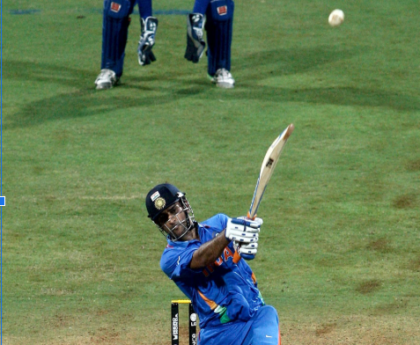Serie A stands as the pinnacle of Italian football, renowned for its rich history, tactical depth, and fierce rivalries. From the dazzling skills of past legends to the strategic brilliance seen in the modern game, Serie A remains a captivating league for fans worldwide.
Examining its statistics provides a valuable perspective on team performances, emerging trends, and standout players, deepening our understanding of the sport. This article delves into Serie A’s statistical landscape, covering goal-scoring patterns, defensive solidity, possession trends, passing efficiency, and individual player contributions, offering a well-rounded insight into the league’s dynamics.
Scoring and Conceding: The Core of the Game
Goals remain football’s most significant metric, and while Serie A has historically been known for defensive excellence, recent seasons have shown an upward trend in goal-scoring. Examining goals per game sheds light on the league’s attacking tendencies, but a deeper analysis of how these goals are scored is even more revealing. Are teams excelling in set-piece situations, utilizing intricate passing sequences, or capitalizing on quick counter-attacks?
Additionally, studying goal distribution throughout a match can uncover tactical patterns—do teams perform better in the early or late stages?
On the defensive end, analyzing goals conceded per game, clean sheets, and defensive records provides insight into team resilience. Understanding whether goals are conceded through open play, set pieces, or defensive errors helps pinpoint specific vulnerabilities that need to be addressed.
Possession and Passing: Controlling the Game
Possession has become an essential aspect of modern football, often reflecting a team’s ability to dictate play. However, possession alone does not guarantee success—it must be purposeful. This is where passing accuracy becomes a crucial indicator. A high passing accuracy percentage suggests a team’s proficiency in maintaining control and constructing meaningful attacking sequences.
Evaluating different types of passes—short, intricate passes versus long, direct balls—helps determine a team’s tactical identity. Teams that prioritize build-up play generally boast higher possession and passing accuracy rates.
Key passes, which directly lead to scoring opportunities, provide deeper insight into attacking effectiveness. Similarly, tracking through balls and completed crosses highlights how teams create chances and penetrate defensive setups.
Defensive Metrics: Tackles, Fouls, and Discipline
Football is as much about defensive solidity as it is about attacking flair. A team’s defensive strength can be gauged through its tackle success rate, which indicates how effectively players win challenges and disrupt opposition attacks. However, an overreliance on tackles can sometimes expose a lack of defensive organization.
Fouls committed and disciplinary records—including yellow and red cards—reveal a team’s approach to defending. While some fouls are inevitable, frequent infractions can disrupt rhythm and lead to key suspensions. Analyzing these trends sheds light on whether a team maintains composure under pressure or struggles with discipline.
Standout Performers: Individual Brilliance
While team statistics offer a broad overview, individual performances often dictate match outcomes. Metrics such as goals, assists, key passes, and dribbling success rates help identify top talents and consistent performers.
Defensive contributions are equally significant—tackle success rates, interceptions, and clearances highlight a defender’s impact. For goalkeepers, statistics like saves per game, save percentage, and clean sheets provide a comprehensive assessment of their performance.
Historical Patterns and Future Outlook
Examining Serie A statistics across multiple seasons reveals intriguing trends. Has goal-scoring increased or declined? Are tactical approaches shifting? Identifying these patterns helps us understand how the league has evolved and what direction it may take in the future.
Predicting future outcomes is challenging, but analyzing current statistics offers valuable clues. For instance, a team generating numerous scoring chances but struggling to convert them may see an improvement in goal-scoring efficiency. Conversely, a side consistently conceding goals might need to address defensive weaknesses before their form worsens.
The Growing Role of Data in Football
The increasing availability of advanced Serie A statistics has transformed how fans, analysts, and coaches interpret the game. Data-driven insights help teams identify areas for improvement, refine tactics, and predict performance trends. As technology advances, we can expect even more sophisticated metrics—such as expected goals (xG), progressive passes, and successful pressing actions—to enhance our understanding of Serie A.
By interpreting these statistics effectively, we gain a deeper appreciation for the tactical nuances, individual excellence, and overall excitement that make Serie A one of the most enthralling leagues in world football.
Impact of Substitutions on Match Outcomes
Substitutions play a crucial role in shaping the outcome of matches. Analyzing the impact of substitutes—such as their goal contributions, assists, or defensive interventions—can reveal how teams effectively use their bench strength.
Understanding when managers make changes and the effectiveness of these tactical adjustments provides insights into squad depth and strategic planning.
Set-Piece Efficiency: A Game-Changer
Set pieces, including free kicks and corners, are often decisive moments in a match. Evaluating a team’s success rate from set pieces can highlight their ability to capitalize on these opportunities.
Similarly, analyzing defensive set-piece effectiveness reveals how well teams organize themselves to prevent conceding from such situations. Strong set-piece performance can often be the difference between a mid-table finish and title contention.
FAQs
Q: Which team is currently leading the Serie A standings?
As of late January 2025, Napoli sits at the summit of the Serie A table, showcasing consistent form throughout the season. Their lead is closely contested by Inter Milan, who are just three points behind, intensifying the race for the Scudetto.
Q: Who are the top goal scorers in the 2024-2025 Serie A season?
The race for the Capocannoniere (top scorer) title is heating up. Nuno Tavares of Lazio leads with 16 goals, followed by Raoul Bellanova of Atalanta with 22 goals. Romelu Lukaku of Napoli has also been prolific, netting 21 goals so far.
Q: Which players have provided the most assists this season?
In terms of playmaking, Nuno Tavares of Lazio stands out with 8 assists. Raoul Bellanova of Atalanta has contributed 6 assists, while Romelu Lukaku of Napoli matches this tally with 6 assists as well.
Q: How has Atalanta’s performance been this season?
Atalanta has been a formidable force, achieving an impressive 11 consecutive victories, a streak that has propelled them to the top tier of the league standings. Key players like Charles De Ketelaere and Ademola Lookman have been instrumental in this success, with De Ketelaere delivering crucial goals and Lookman being involved in more goals than any other player in the league this year, amassing 16 goals and 11 assists.
Q: What are some notable defensive statistics this season?
Defensively, teams like Juventus and Inter Milan have showcased resilience, maintaining some of the lowest goals-against tallies in the league. Individual defenders have also emerged as key figures, contributing to their teams’ strong defensive records. For detailed defensive statistics, platforms like ESPN and FBref offer comprehensive insights.
To read more, click here.

